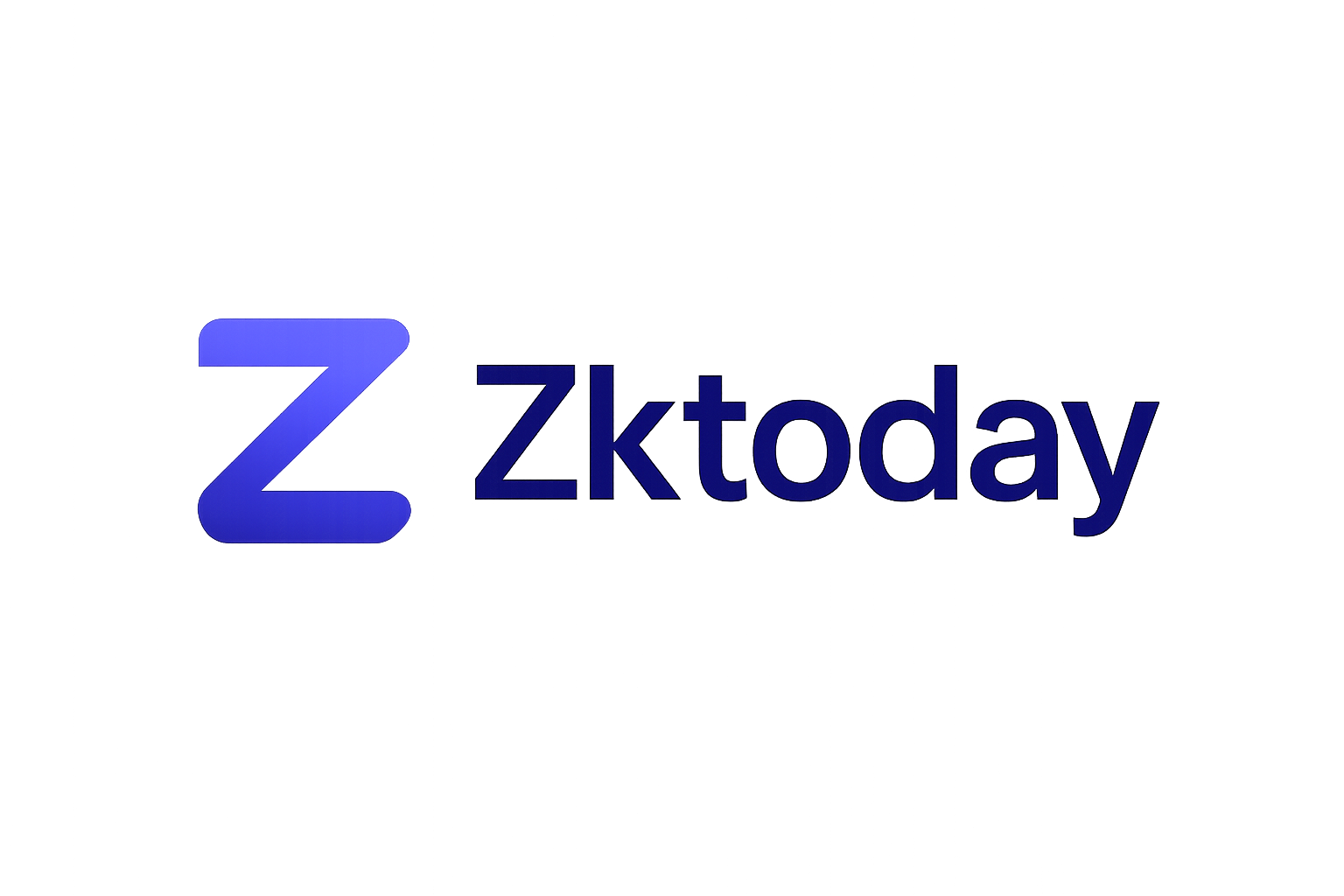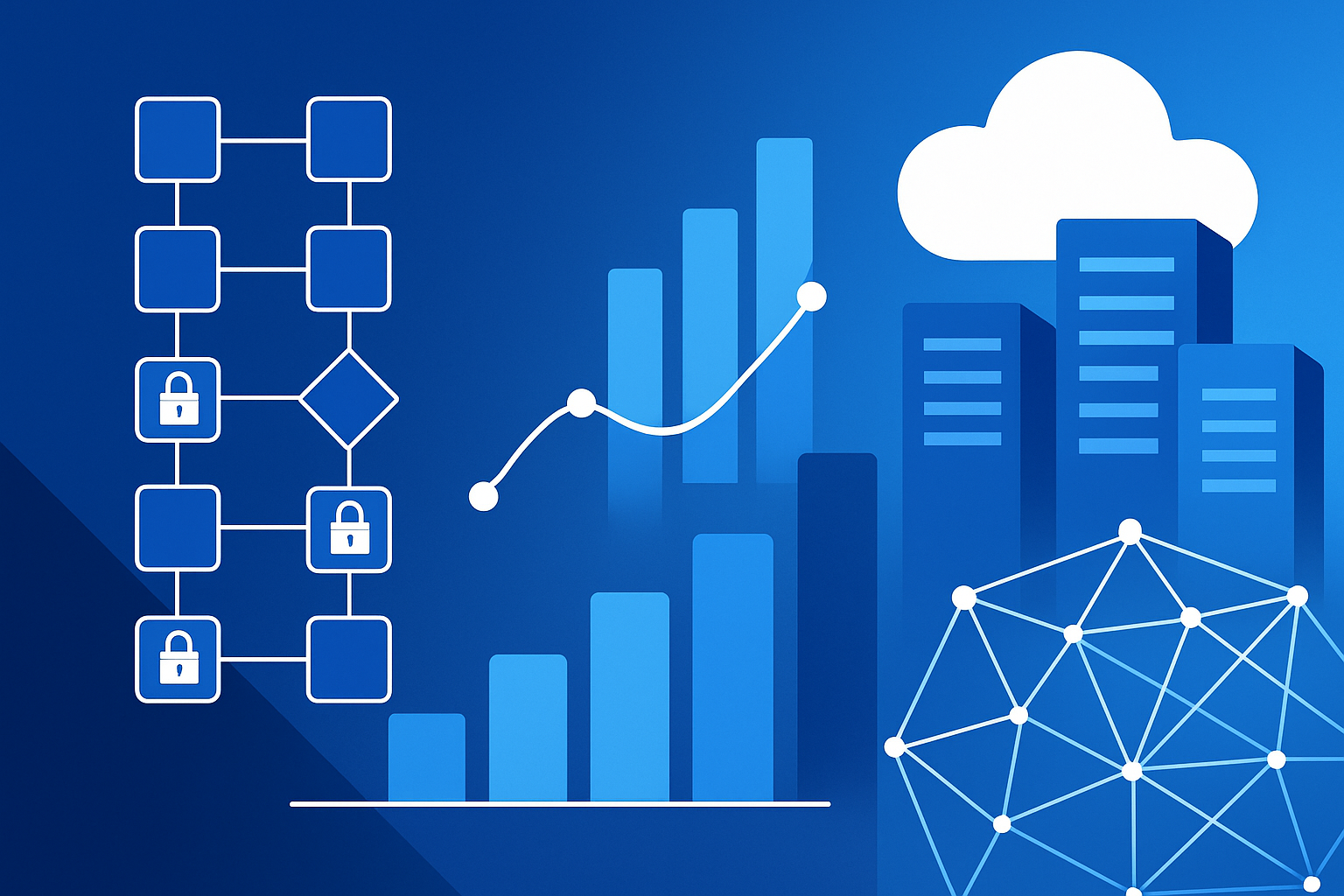
Ethereum’s relentless pursuit of scalability has reached a pivotal juncture. As of November 2025, Ethereum trades at $3,412.06, reflecting its continued relevance as the backbone for decentralized applications. Yet, with mainstream adoption accelerating, the network faces mounting pressure to process exponentially more transactions per second (TPS) without sacrificing security or decentralization. Enter zero-knowledge (ZK) rollups and horizontal scaling, a synergistic approach that could propel Ethereum to an ambitious target: 10 million TPS across Layer 2s.
The Scaling Bottleneck: Why ZK Rollups Matter
Traditional Layer 1 blockchains like Ethereum are constrained by the trilemma of scalability, security, and decentralization. While incremental upgrades and gas limit increases have nudged throughput upwards, Ethereum’s mainnet now regularly processes over a million transactions daily, these improvements alone cannot meet the demands of global-scale applications such as DeFi, gaming, and on-chain social networks.
ZK rollups emerged as a breakthrough Layer 2 scaling solution. By aggregating thousands of transactions into a single cryptographic proof (a validity proof), which is then submitted to Ethereum mainnet for verification, ZK rollups offer two critical advantages:
- Massive Throughput Gains: Off-chain aggregation slashes on-chain data requirements, allowing each rollup to process thousands of TPS.
- Mainnet Security: The validity proofs guarantee correctness; even if a rollup operator misbehaves, users’ funds remain safe under Ethereum’s consensus rules.
This dual benefit has catalyzed rapid adoption by projects such as zkSync, Scroll, Starknet, and Linea, all aiming to push the envelope on throughput while preserving composability and trustlessness.
Horizontal Scaling: Multiplying Capacity Across L2s
The real paradigm shift comes from horizontal scaling with ZK rollups. Unlike vertical scaling, which focuses on making a single chain faster, horizontal scaling distributes transaction load across multiple parallel Layer 2 networks (L2s). Each L2 operates independently but settles its proofs back to Ethereum mainnet for security.
This architecture unlocks near-linear scalability: If one high-performance ZK rollup can handle 100,000 TPS, then ten such rollups operating in parallel could theoretically process one million TPS collectively. As more L2s join the ecosystem, each optimized for different use cases or communities, the aggregate throughput multiplies accordingly.
Vitalik Buterin’s vision is clear: No single blockchain will achieve 10 million TPS alone; rather, it will be the sum total of many coordinated L2s leveraging ZK technology that delivers this scale (read more about multi-rollup architectures here).
Pushing Boundaries: Real-Time Proving and Protocol Upgrades
The technical linchpin for this vision is real-time generation of ZK proofs within Ethereum’s block time (roughly 12 seconds). Cutting-edge advancements like Succinct’s SP1 Hypercube zkVM have already demonstrated real-time proof generation for over 90% of mainnet blocks using GPU clusters, on track to hit even higher reliability by year-end.
The upcoming Glamsterdam upgrade further accelerates this trend by decoupling block validation from immediate execution. This gives provers more breathing room to compute zkEVM proofs without bottlenecking transaction finality. Meanwhile, innovative sharding architectures from projects like Linea promise up to 100,000 and TPS per shard, with near-linear scaling as additional shards come online.
The Market Context: Ethereum at $3,412.06 Amid Scaling Race
The current ETH price of $3,412.06, down modestly by -0.007240% in the past day but holding steady above key support levels, reflects investor optimism in ongoing scalability breakthroughs. The market is watching closely as protocol enhancements and Layer 2 innovations converge toward the collective goal of multi-million TPS throughput, potentially transforming everything from payments infrastructure to decentralized gaming economies.
Ethereum (ETH) Price Prediction 2026-2031: Impact of ZK Rollups and L2 Scaling
Forecast based on Ethereum’s horizontal scaling roadmap, ZK Rollup adoption, and evolving market conditions (2025 baseline: $3,412.06)
| Year | Minimum Price | Average Price | Maximum Price | % Change (Avg YoY) | Scenario Insights |
|---|---|---|---|---|---|
| 2026 | $2,800 | $4,100 | $5,500 | +20% | Upside from Glamsterdam upgrade and early ZK Rollup adoption; downside risk from macro/regulatory volatility |
| 2027 | $3,300 | $5,000 | $7,200 | +22% | Mainstream L2 adoption, real-time ZK proving matures; increased DeFi and NFT activity |
| 2028 | $3,900 | $6,200 | $9,000 | +24% | L2 throughput exceeds 1M TPS; ETH used in new scaling models; competition from rival L1s |
| 2029 | $4,700 | $7,800 | $11,500 | +26% | Ethereum approaches 10k TPS on L1, millions on L2; institutional adoption rises |
| 2030 | $5,600 | $9,700 | $14,500 | +24% | Full ZK-Rollup sharding; ETH as a settlement layer; potential ETF approvals |
| 2031 | $6,700 | $11,800 | $18,000 | +22% | Ethereum achieves 10M TPS goal; mass adoption in DeFi, gaming, tokenization; regulatory clarity |
Price Prediction Summary
Ethereum’s price outlook for 2026-2031 is broadly bullish, driven by the successful rollout of ZK Rollups, horizontal L2 scaling, and real-time ZK proving. As Ethereum transitions into a high-throughput, low-cost settlement layer, demand for ETH is expected to rise across DeFi, gaming, and tokenization sectors. While volatility and regulatory risks persist, the technical roadmap positions Ethereum for significant growth, with average annual price increases of 20-26%. Upside scenarios reflect mass adoption and institutional inflows, while downside risks stem from regulatory clampdowns, macroeconomic shocks, or aggressive competition from other smart contract platforms.
Key Factors Affecting Ethereum Price
- Adoption and maturity of ZK Rollups and L2 solutions (real-time proving, sharding)
- Protocol upgrades (Glamsterdam, further L1 enhancements)
- Growth in DeFi, NFT, and new on-chain use cases enabled by scaling
- Regulatory clarity in key markets (US, EU, Asia)
- Broader crypto market cycles and risk appetite
- Competition from alternative L1 blockchains (e.g., Solana, Avalanche, Sui)
- Institutional adoption and potential ETF approvals
- Macroeconomic environment and global liquidity conditions
Disclaimer: Cryptocurrency price predictions are speculative and based on current market analysis.
Actual prices may vary significantly due to market volatility, regulatory changes, and other factors.
Always do your own research before making investment decisions.
If you’re interested in how these modular approaches solve deeper blockchain challenges beyond raw speed, including data availability and trustless interoperability, consider exploring our deep dive on the scalability trilemma here.
As Ethereum’s Layer 2 ecosystem matures, the interplay between ZK rollups, sharding, and new protocol primitives is redefining what’s possible for decentralized networks. The horizontal scaling model doesn’t just multiply raw TPS; it enables application-specific rollups (appchains) to flourish. These rollups can be tailored for DeFi, gaming, AI, or social platforms, each optimized for its unique workload while contributing to Ethereum’s aggregate throughput.

This modular approach also enhances resilience. If one L2 experiences congestion or downtime, others continue operating independently. Native rollups, a new generation of L2s designed with direct mainnet integration and advanced proof mechanisms, further increase security while reducing withdrawal times and capital inefficiency. Depositing $10 million on a native rollup now offers security guarantees nearly equivalent to mainnet custody, an unprecedented milestone for institutional adoption.
Real-World Impact: ZK Rollups in Action
The real-world use cases of ZK rollups are already reshaping the landscape:
- Decentralized Exchanges (DEXs): Platforms like dYdX process trades at speeds rivaling centralized exchanges by leveraging ZK proofs for instant settlement.
- NFT Marketplaces: Projects such as Sorare and Immutable X batch thousands of NFT mints and transfers with near-zero gas fees.
- On-Chain Gaming: Games built on Starknet or zkSync enable real-time interactions without mainnet bottlenecks.
- Payments and Micropayments: With sub-second finality and negligible costs, ZK-powered payment rails are unlocking new business models globally.
The modular design also supports future interoperability between rollups themselves, laying the groundwork for cross-rollup composability, a key milestone toward a truly unified Web3 experience. For a detailed technical breakdown of how programmable rollups and smart sequencers fit into this vision, see our resource on programmable horizontal scaling here.
Risks and Remaining Challenges: What Could Slow Down Horizontal Scaling?
No technological leap comes without risks. The road to 10 million TPS is paved with hurdles:
- ZK Proof Generation Costs: Real-time proving still requires significant hardware resources (e. g. , GPU clusters), though ongoing research aims to optimize efficiency.
- L2 Fragmentation: As more app-specific rollups launch, liquidity and user experience may fragment unless robust bridging and interoperability standards emerge.
- Mainnet Bottlenecks: While L2s offload most computation, data availability solutions must keep pace or risk becoming the next limiting factor.
- User Education and Adoption: Onboarding users seamlessly into Layer 2 ecosystems remains a UX challenge that must be solved for mass adoption.
The Ethereum community is actively addressing these issues through coordinated protocol upgrades, open research collaborations, and improved developer tooling. The next few years will be critical as real-world stress tests validate the robustness of these scaling solutions under increasing demand.
Looking Ahead: Ethereum’s Modular Future
If current trends hold, and if breakthroughs in real-time proving and cross-rollup composability continue, Ethereum could realistically achieve its target of 10 million TPS across Layer 2s within this decade. This would not only cement its position as the programmable settlement layer for global finance but also unlock entirely new classes of decentralized applications previously unthinkable due to scalability constraints.
The price action around $3,412.06, while only a snapshot in time, underscores market conviction that Ethereum’s modular roadmap is more than hype, it’s an unfolding reality. As zero-knowledge technology matures from research labs into production-grade infrastructure, investors should watch closely: numbers tell the story, but it’s the architecture that drives the narrative forward.
For more on how ZK rollups are enabling trustless blockchain scaling through advanced provers and verifiers, see our explainer on the role of provers in trustless scaling.






